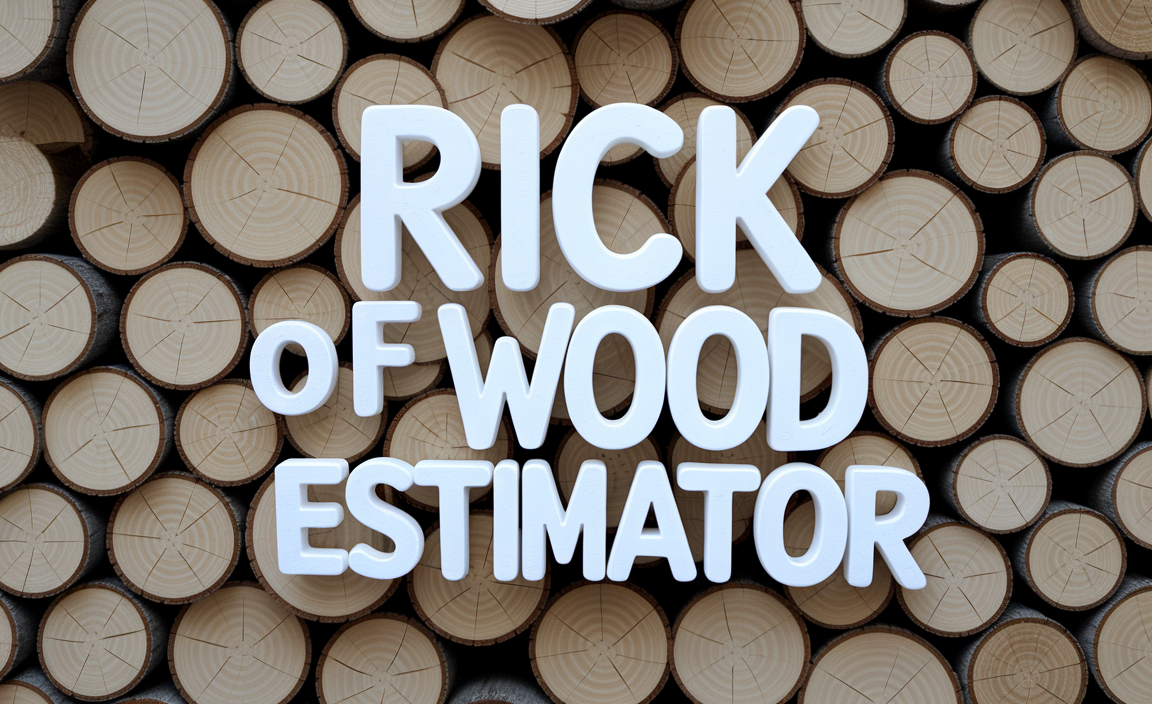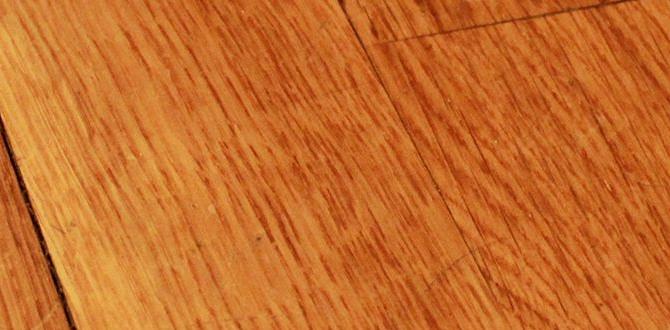Quick Summary:
Cleaning your nail gun’s trigger system is crucial for smooth operation and preventing jams. Follow these simple steps using the right tools and cleaning agents to get your nailer working like new, ensuring safety and efficiency for all your DIY and woodworking projects.
Hey there, fellow builders and DIYers! Jack Shaffer, your go-to tool guy from Nailerguy, here. Ever experienced that frustrating moment when your nail gun trigger feels sticky, sluggish, or just plain refuses to work? It’s a common issue, especially with frequent use, and it can really throw a wrench in your project plans. But don’t worry! Keeping your nail gun’s trigger system clean and responsive is more straightforward than you might think. We’ll walk through it step-by-step, making sure you can get back to building with confidence. Let’s get your favorite tool back in top shape!
Table of Contents
Why Cleaning Your Nail Gun Trigger System Matters
Your nail gun is a powerhouse tool, designed for efficiency and speed. At its heart is the trigger system, a delicate assembly that orchestrates the firing mechanism. When dirt, sawdust, oil residue, or even tiny metal shavings build up here, it can lead to a range of problems. These aren’t just minor annoyances; they can impact your work and, more importantly, your safety.
A dirty trigger might:
- Become stiff and difficult to pull, leading to hand fatigue.
- Fail to engage properly, causing delayed or missed nail fires.
- Cause the nailer to misfire or fire unexpectedly, posing a safety risk.
- Lead to jams, interrupting your workflow and potentially damaging the tool.
Regular cleaning, especially of the trigger mechanism, is a vital part of tool maintenance. It ensures your nail gun performs reliably, extends its lifespan, and keeps you working safely and efficiently. Think of it as a little TLC for your most trusted sidekick on any project.
Understanding Your Nail Gun’s Trigger System
Before we dive into cleaning, it’s helpful to have a basic understanding of how a nail gun trigger works. While designs vary slightly between pneumatic, cordless, and electric models, the core principle is similar. The trigger is essentially a switch. When you press it, it activates a sequence of events that results in a nail being driven.
In a pneumatic nailer, pulling the trigger typically opens a valve, allowing compressed air to flow into the cylinder, driving the piston and thus the nail. In cordless and electric models, it activates a motor or a mechanism that drives the nail.
The trigger assembly itself usually involves small springs, levers, and sometimes electrical contacts. These components are susceptible to contamination from the environment and normal tool wear. Keeping these parts free from debris is key to maintaining its responsiveness and preventing issues.
Is Your Nail Gun Trigger Dirty? Signs to Look For
Sometimes, the signs are obvious, but other times, they can be subtle. Paying attention to how your nailer feels and sounds during operation can help you catch a dirty trigger system before it becomes a major problem. It’s like listening to your car – those little noises can tell you a lot!
Watch out for these common indicators:
- Stiffness: The trigger feels harder to pull than usual, or it doesn’t snap back crisply after being released.
- Sluggishness: There’s a noticeable delay between pressing the trigger and the nail firing.
- Inconsistent Firing: The nailer sometimes fires, and sometimes it doesn’t, even when the trigger is fully depressed.
- Double Firing (Bump Fire Issues): While sometimes a setting, if it starts happening unexpectedly, debris could be interfering with the trigger’s reset mechanism.
- Unusual Noises: Grinding or clicking sounds coming from the trigger area when operating.
- Visual Cues: You might see visible dust, grime, or even dried lubricant around the trigger guard or near the trigger pivot point.
If you’re experiencing any of these, it’s a good sign that it’s time for a cleaning. Don’t delay – a little preventative maintenance goes a long way!
Essential Tools and Supplies for Cleaning
You don’t need a professional workshop for this. With a few common items, you can get your nail gun trigger system sparkling clean and functioning perfectly. Having the right supplies makes the process smoother and more effective.
Tools You’ll Need:
- Safety Glasses: Always protect your eyes, especially when working with tools and cleaning agents.
- Gloves: To keep your hands clean and protect them from cleaning solutions.
- Small Screwdriver Set: Often needed to gently pry open or remove parts of the trigger guard.
- Compressed Air Duster: For blowing out loose debris.
- Soft Brushes: Like an old toothbrush or a small detailing brush for scrubbing away grime.
- Clean Lint-Free Cloths: For wiping down surfaces.
- Cotton Swabs (Q-tips): Excellent for reaching small nooks and crannies.
- Pliers (Optional): For gently removing stubborn parts if necessary.
- Small Container or Tray: To hold any removed parts.
Cleaning Supplies:
- Denatured Alcohol or Isopropyl Alcohol (90% or higher): A great degreaser that evaporates quickly without leaving residue.
- Contact Cleaner (Electronic Cleaner): If your trigger has electrical components, this is ideal.
- Light Lubricant (e.g., WD-40 Specialist Dry Lube, silicone spray, or specialized tool oil): For after cleaning to keep parts moving freely. Avoid heavy greases that attract dust.
- Mild Soap and Water (Use Sparingly): For stubborn external grime, but ensure it’s thoroughly dried afterward.
It’s always a good idea to consult your nail gun’s owner’s manual for specific cleaning recommendations, as some manufacturers might suggest particular types of cleaners or lubricants.
Step-by-Step Guide: How to Clean Your Nail Gun Trigger System
Alright, let’s get down to business! This guide will help you safely and effectively clean your nail gun’s trigger system. Remember to work in a well-ventilated area and always prioritize safety.
Step 1: Safety First – Disconnect and Depressurize!
This is the MOST IMPORTANT step. Never work on a nail gun that is connected to an air hose, power source, or has a loaded magazine.
- Pneumatic Nailers: Disconnect the air hose completely. Then, remove any nails from the magazine. Point the nailer away from yourself and others and pull the trigger several times to release any residual air pressure.
- Cordless Nailers: Remove the battery pack. Ensure the magazine is empty.
- Electric Nailers: Unplug the power cord. Make sure the magazine is empty.
Double-check that there are no nails loaded and that the power source is disconnected. Safety is non-negotiable when working with tools that drive fasteners.
Step 2: Inspect and Prepare the Trigger Area
Take a close look at the trigger and the surrounding trigger guard. Can you see obvious dirt, dust, or grime? Gently try to wipe away any loose debris with a dry cloth.
You might notice a small screw or clip that holds the trigger guard in place. Some trigger guards simply snap off, while others require minor disassembly. Refer to your manual if you’re unsure, but often, a small screwdriver can help gently pry the guard open enough to access the trigger mechanism.
Step 3: Accessing the Trigger Mechanism
For most nail guns, the trigger guard can be carefully pulled or pried open slightly to expose the trigger pivot and internal linkages. Be gentle! You don’t want to force anything and risk breaking a plastic component.
If your model allows for it, you might be able to remove the trigger itself for a more thorough cleaning. This usually involves a small pin or screw holding it in place. Again, consult your manual if you’re unsure. If you can’t easily remove the trigger or guard, don’t worry; we can still clean it effectively.
Step 4: Blowing Out Debris
Grab your compressed air duster. Holding the can upright, give short bursts of air into and around the trigger mechanism. Aim to dislodge any loose dust, sawdust, or small particles that might be lodged in the nooks and crannies.
Pay attention to areas where the trigger pivots and where it interfaces with other internal parts. This step alone can often make a noticeable difference.
Step 5: Cleaning Stubborn Grime
If compressed air didn’t get everything, it’s time for a cleaning solution. Dip a cotton swab or the tip of a clean cloth into your denatured alcohol or contact cleaner.
Gently dab and wipe the trigger, its pivot points, and any visible levers or springs. Work methodically, making sure to clean all accessible surfaces. For any particularly stubborn grime, use your soft brush dipped lightly in the cleaning solution to scrub gently.
Important Note: If your nail gun has electrical components near the trigger (common in cordless and some electric models), use an electronic contact cleaner. Denatured alcohol can also work, but contact cleaner is specifically designed for these sensitive parts. Ensure the cleaner evaporates completely before proceeding.
Step 6: Wiping Down and Drying
After applying the cleaning solution, use a clean, lint-free cloth to wipe away any loosened dirt and excess cleaner. Pay close attention to drying any parts you’ve cleaned, especially if you used even a tiny bit of water (which is generally best avoided internally). Alcohol evaporates quickly, which is why it’s a preferred cleaner.
Allow the trigger mechanism to air dry completely for at least 15-30 minutes, or use a clean, dry cloth and a bit of compressed air to speed up the process. Ensure there’s no moisture left behind, as this can interfere with lubrication or cause corrosion.
Step 7: Lubrication (Lightly!)
Once everything is dry and clean, it’s time for a touch of lubricant. The goal here is not to soak the mechanism, but to apply a _very light_ coating to the pivot points and any moving parts of the trigger assembly.
Use a specialized tool lubricant, a silicone spray, or a dry lubricant. Apply only a tiny amount with a cotton swab or the straw applicator that comes with spray lubricants. Too much lubricant will attract more dust and can actually worsen the problem over time.
Gently work the trigger a few times to distribute the lubricant evenly. Wipe away any excess lubricant.
Step 8: Reassembly and Testing
If you removed any parts, carefully reassemble them now. Reattach the trigger guard, ensuring it snaps or screws back into place securely.
Once everything is back together, reconnect your power source (re-attach the battery, plug in the cord, or connect the air hose). Pick up the nailer, point it in a safe direction (away from people, pets, and yourself), and gently squeeze the trigger. It should feel noticeably smoother and more responsive. If your nailer has a safety contact tip, you may need to press this against a piece of scrap wood to test the firing mechanism.
Perform a few test fires into scrap material to confirm everything is working as it should. You should feel a crisp action from the trigger, and the nail should fire without hesitation.
Troubleshooting Common Trigger Issues Post-Cleaning
Even after a thorough cleaning, you might encounter a lingering issue. Don’t get discouraged! Most problems have simple solutions.
Here are a few common scenarios:
| Problem | Possible Cause | Solution |
|---|---|---|
| Trigger still feels stiff | Insufficient lubrication or a bent internal part. | Apply a tiny bit more lubricant. If the issue persists, a small internal part might be bent or damaged, requiring a closer inspection or professional service. |
| Sticky trigger after cleaning | Re-introduced dust/grime or too much/wrong type of lubricant. | Re-clean the area. Ensure you’re using a dry lubricant or light mineral oil and only a minimal amount. Wipe away any excess. |
| Trigger won’t engage at all | Safety mechanism engaged, or a disconnected internal component. | Ensure the safety contact tip (if applicable) is being depressed. Check if any internal linkages became dislodged during cleaning. |
| Misfiring or inconsistent firing | Still some debris, or a problem with the internal valve or firing pin. | Repeat the compressed air step. If it continues, the issue might be deeper within the tool’s firing mechanism, not just the trigger. |
If you’ve tried these steps and the problem persists, it might be time to consult your tool’s manual for advanced troubleshooting or contact the manufacturer’s support. For more complex internal issues, a qualified tool repair service is your best bet.
When to Seek Professional Help
While most trigger cleaning can be done at home, there are instances where professional intervention is necessary. If you’ve performed the cleaning steps and the issue remains, or if you’re uncomfortable disassembling any part of your tool, it’s wise to seek expert advice.
Consider professional help if:
- You suspect a more serious internal component is damaged or broken.
- Your nailer is still under warranty, and you don’t want to void it by attempting repairs yourself.
- You’ve attempted cleaning without success and are hesitant to proceed further.
- The problem involves safety features that you are unsure how to address.
Reputable tool repair shops or the manufacturer’s service centers can diagnose and fix a wide range of problems, ensuring your nail gun is safe and reliable for future use. Investing in professional service for a stubborn issue can save you time, frustration, and potentially prevent further damage to your tool.
Preventative Maintenance Tips for Your Nail Gun
The best way to avoid trigger issues and other problems is through consistent preventative maintenance. A little effort regularly can save you a lot of headaches down the road.
Here are some key habits to get into:
- Regular Cleaning: Make cleaning the trigger mechanism and general exterior a part of your routine, especially after dusty jobs.
- Proper Lubrication: Follow the manufacturer’s guidelines for lubricating your nail gun. Over-lubricating can be as bad as under-lubricating! This usually involves a few drops of oil in specific ports after a certain number of uses. You can find excellent guides on this from sources like Fine Homebuilding, a trusted name in home improvement.
- Storage: Store your nail gun in a clean, dry place. A dedicated tool bag or case can help protect it from dust and debris.
- Handle with Care: Avoid dropping your nail gun or exposing it to harsh impacts.
- Use Clean Air (Pneumatic): Ensure your air compressor system has proper filtration and water traps to deliver clean, dry air to your pneumatic nailers. Contaminated air can introduce moisture and debris.
- Inspect Regularly: Before and after each use, give your nailer a quick visual inspection for any obvious damage or loose parts.
- Check the Manual: Always refer to your owner’s manual for specific maintenance instructions tailored to your model.
By incorporating these simple practices, you’ll keep your nail gun in optimal condition, ensuring it’s always ready when inspiration strikes for your next project.
Conclusion
Keeping your nail gun’s trigger system clean might seem like a small detail, but it’s one of the most impactful maintenance tasks you can perform. A well-cared-for trigger ensures smooth, safe, and efficient operation, letting you focus on your woodworking or DIY projects without frustrating tool interruptions. We’ve walked through identifying the signs of a dirty trigger, gathering the right supplies, and executing a step-by-step cleaning process. Remember, safety always comes first – disconnect power sources and remove all fasteners before you begin!
Don’t let a sticky or sluggish trigger hold you back. By following this expert guide, you can confidently clean and maintain your nail gun, extending its life and improving its performance. So grab your tools, follow these steps, and get back to creating with confidence. Happy building!
Frequently Asked Questions (FAQ)
Q1: How often should I clean my nail gun trigger system?
A1: It depends on how often you use your nail gun and the environment you use it in. For casual DIY use, cleaning every few months might be sufficient. If you use it frequently on dusty job sites, cleaning it after each major project or even mid-project if you notice sluggishness is a good idea.
Q2: Can I use WD-40 to clean my nail gun trigger?
A2: While WD-40 can help remove some grime, it’s not the ideal




